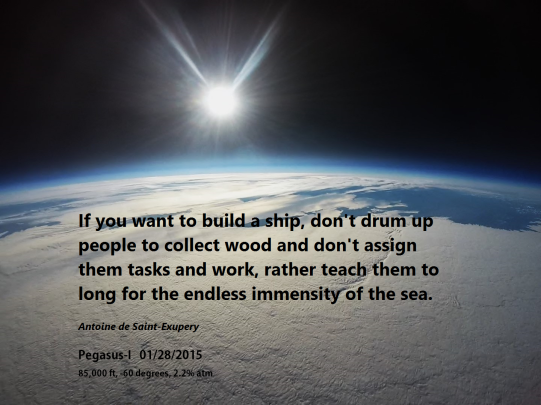Thank you all for participating in the flight of Pegasus II, you have been the most gracious and patient audience and it is has been our greatest pleasure to present this historic trip to near space to you. The mission team made a little history by broadcasting to you real-time telemetry from a UAV over 110,000 feet above the surface in the earth to users around the world. Additionally, we received user messages for the craft from around the world using the mobile apps. Messages from India, Norway, France, USA, Martinique, New Zealand, Argentina, Belgium, Germany, and Australia were greatly welcome to make the event truly global in nature.
Below are some stats from the flight and a few pictures. More pictures and video to follow this and week.
With a tear in my eye, we thank you again for giving true meaning to this now not-so-impossible adventure in experiential STEM research.
| Flight Time |
2 hours, 8 min, 53 secs |
| Ascent Time |
1 hours, 41 min, 50 secs |
| Ascent Rate |
18 ft/sec, 5.49 m/s |
| Descent Time |
27 min, 3 secs |
| Descent Rate |
67.8 ft/sec, 20.7 m/s |
| Max Altitude |
110,703 feet or 33,750 meters |
| Min Air Pressure |
6.7 mB or 0.65% atm |
| Max Radiation |
23 #/sec |
| Max UV Rays |
3.6 at 98,807 feet |
| # Users during Flight Time |
1,863 |
| % Mobile Users |
42% |
| Total Field Gateway Messages Sent |
16,576 |
| # Ground Telemetry Messages |
9,706 |
| Total App Messages Received |
~ 31,000,000 |
Recovery Map – Purple indicates point of touchdown. Other 2 points indicate last GPS location by launch and mobile stations, respectively.

Deformed Balloon due to high wind prior to launch

1 min after launch from the down camera

The Edge of Space near the apex of flight

Balloon Burst in 1/100 second increments from 110,703 feet altitude


















